In the course of our plain birds photo trip season we set up a couple of hides for Bee-eaters. At one of these one of our guests told us that there was a Stone Curlew’s nest just a few metres behind the hide! He had watched and photographed the adult birds on and around the nest.
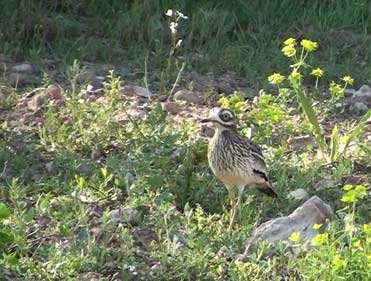
We made careful note of the nest’s location, it was no easy task to locate without references, and made an additional hole in the back of the hide to allow our guests to photograph Stone Curlews and Bee-eaters in the same session. Entrance and exit from the hides was carried out with great care and efficiency to ensure minimum disturbance to the birds.
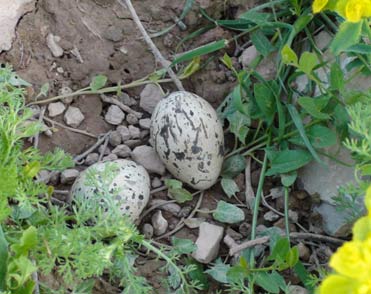
There were two speckled eggs deposited in a tiny scoop in the soft earth. One day from the hide the occupant watched the eggs hatch, the next day there was no sign of adults or the nidifugous chicks.
A week or so later I was setting up a hide in a new location where there were largish gatherings of Stone Curlews. I had chosen a likely-looking spot and had already planted the hide when I noticed something at barely a metre from where I was standing. I looked closer, and saw a fluffy little Stone Curlew chick! It couldn’t have been more than a few days old, and was lying completely motionless, putting complete faith in its “invisibility”. After taking a couple of quick shots I made a hasty retreat to allow the adult birds to return and move their chick on to a safer spot.
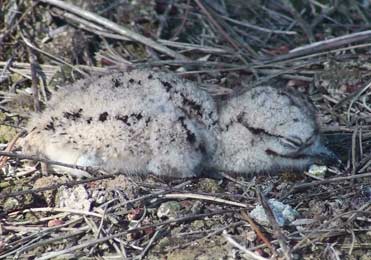
Stone Curlews: the benefits and dangers of not being seen!
Posted in Hide photography | 2 Comments »
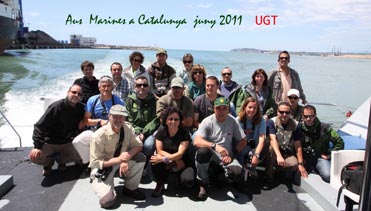
Els dies 7, 8 i 9 de juny vam estar amb L’UGT – Agents Rurals com a ponents d’un curset d’identificació d’aus marines de Catalunya.
De fet el primer curs d’aus marines es va fer l’any passat des de Salou, durant el mes de maig. Es veu que hi havia molta demada i així vam tindre la sort de poder repetir enguany.
En total els 20 participants vam passar unes 20 hores aprenent sobre la biologia i l’identifació de les aus marines de Catalunya. Segurament, però, la part que ens va agradar més eren les 2 sortides que vam realitzar des del port de Tarragona. Vam tindre la sort de gaudir de bon temps, a pesar de les previsions més pessimistes, i vam acabar amb una llista d’espècies molt semblant a la de l’any passat: Ocell de Tempesta, Baldriga Mediterrània, Baldriga Balear, Baldriga Cendrosa, Paràsit Cuaample (és una cita força tardana o només ho sembla a mi?), Paràsit Gros, Paràsit Cuapunxegut, Mascarell, Xatrac Bec-llarg, Xatrac Comú, Corb Marí Gros, Corb Marí Emplomallat, Gavina Corsa, Gavina Riallera, Gavià Argentat de Potes Grogues, Gavià Fosc. I dues espècies noves: Fumarell Negre i Bec d’Alena!
Veure l’article original aquí
Posted in Birds in Spain, General | No Comments »
FROM
the 8th to 15th May we received the first group of photographers from Wild Images. Wild Images, a daughter company of Birdquest, came with leader Mike Watson and 6 avid bird photographers from different parts of the UK.
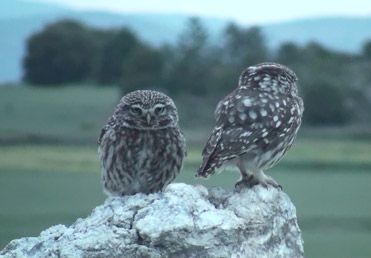
They followed the basic outline of our Great Photo Trip (see details here) with 3 days on the plains of Lleida and 2 in the Lammergeier hide in the Pre-Pyrenees.
Apart from Lammergeiers and the other 3 species of vulture they also managed to get excellent shots of a wide variety of birds on the steppes, in magnificent spring scenery. Jumping Little Bustards, Bee-eaters, Stone Curlews, Montagu’s Harriers, Iberian Grey Shrike, Corn Bunting and even a last minute Hoopoe! Still, in my opinion it was the Little Owls that really stole the show.
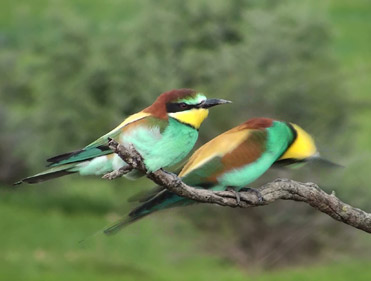
Did they leave with smiles on their faces and giving us the thumbs up? Well, yes. And if you want to see some of the great photos they took then you need do no more than click on these links to their own websites:
Mike Watson (Wild Images leader)
Eric McCabe (with wife Lesley hailing from Scotland)
David Mercer
Congratulations to all! We’re looking forward to next spring already.
Posted in Birding and wildlife trips, Birds in Spain, Photos and Places | No Comments »
Quail

A Quail sat in the track in my car headlights just before dawn
Bee-eater
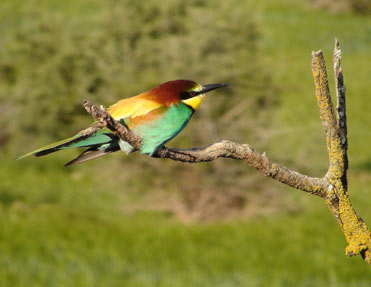
The Bee-eaters in front of the hide were bright and good afternoon entertainment
Little Owl
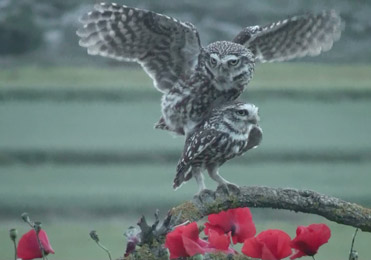
The Little Owl antics usually steal the show.
Thekla Lark
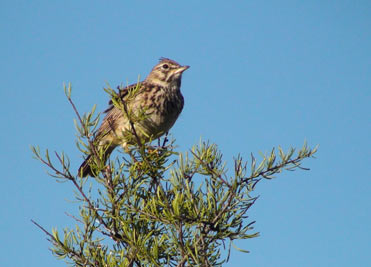
Singing Thekla Lark was an added bonus from the Hoopoe hide.
Monty’s Harrier
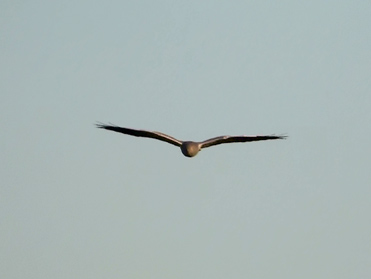
Poppy landscape
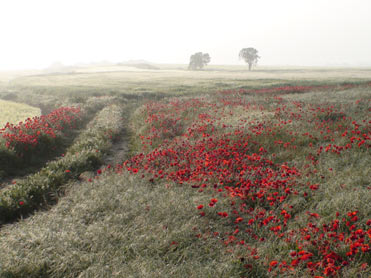
Now that’s not bad for a (very early) morning or two out on the plains of Lleida.
Posted in Birding and wildlife trips, Birds in Spain, Photos and Places | No Comments »
A couple of flight sequences from some months back. In the Pre-pyrenees of Lleida.
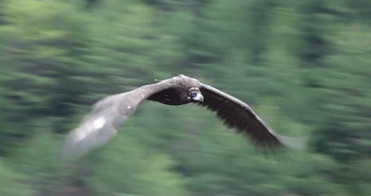
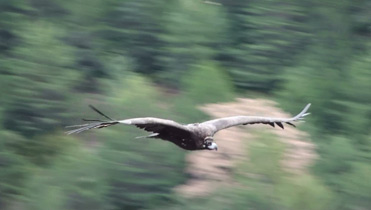
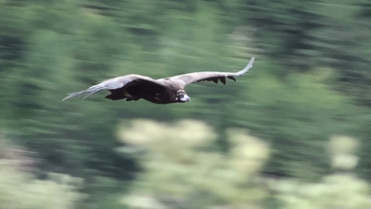
Black Vultures have bred there now for the second consecutive year and seem to be on the way to repaying the efforts at re-establishing the species in this part of Spain.
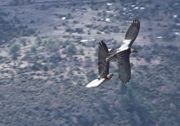
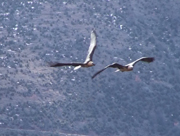
In the last year or so some Lammergeiers have been observed outside their normal range in the Pyrenees. It is well known that vacant territories for this species in the Pyrenees are hard to come by, so perhaps this is a forced response by this normally sedentary species.
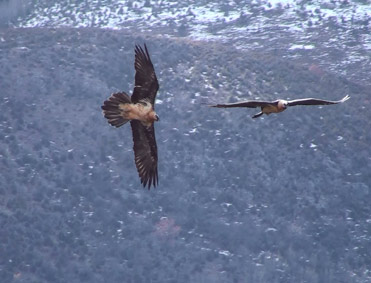
One slightly worrying aspect about the latter species is that a couple of adult birds have been found dead, the cause of death having been lead poisoning. This fact is of great relevance to feeding stations: they are strongly advised not to put out animals that have been shot (boar, deer, etc), as if the bullet is not removed from the corpse within five minutes of entering the body the lead spreads around the body and can end up in Lammergeiers and other vultures.
Let’s hope they take note.
Posted in Birds in Spain, Photos and Places | No Comments »
This is one of the pair of Stone Curlews that nested by the side of one of our Bee-eater hides on the plains of Lleida.
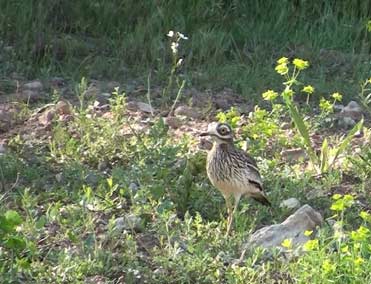
The nest was basically a small hollow lined with a bit of dry grass and gravel-sized stones. The eggs, two, were speckled and brown-beige. The adults were very discreet in their comings and goings, as you would expect from a ground-nesting bird. One of the adults would incubate while the other would stay around preening, dozing or stretching itself, although at times the incubating bird also got up and took a small rest from pre-parental responsibilities.
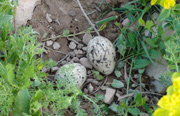

On Wednesday the female started making some strange noises, which Jordi Bas explained as the female making contact with young which were almost ready to hatch. Sure enough, the next day there were two tiny chicks, to the delight of all. Today all the birds have gone from the nest site.
Posted in Birding and wildlife trips, Photos and Places | 1 Comment »
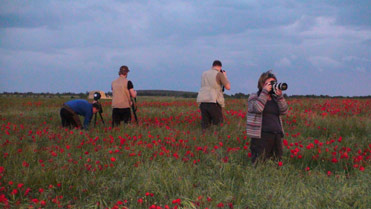
Roy Mangersnes and his Wildphoto photographers came to the drylands of Lleida to photograph displaying Little Bustards, Stone Curlew, Little Owl, Bee-eater, Montagu’s Harrier and more last week. By all accounts they had a great time and got some excellent shots.
You can read Roy’s blog entry at this link.
And see a small selection of his photos.
Posted in General | 1 Comment »
By the way, some of the birds that could be seen at or near the photo sites in the previous blog article:
Pallid Swift, Melodious Warbler, Yelkouan Shearwater, Bonelli’s Eagle
Sardinian Warbler, Bonelli’s Eagle, Black Wheatear, Griffon Vulture
Peregrine Falcon, Red-billed Chough, Crag Martin, Crossbill
Golden Eagle, Water Pipit, Rock Thrush, Black Redstart
Bittern, Bearded Tit, Montagu’s Harrier, Calandra Lark
Posted in General | No Comments »
Spanish birds, Spanish skies.
Just enjoy the photos, taken at different places in northeast Spain while out looking for birds. Sometimes you get to see the birds you want to see, at others you don’t, but get a thrill from the places you go to all the same.
Maybe you know where these photos were taken?
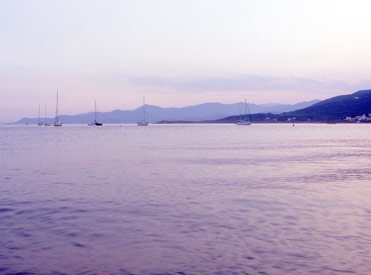
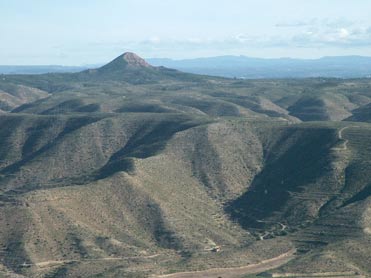
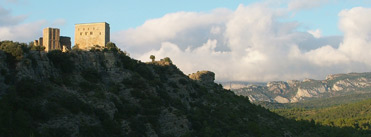
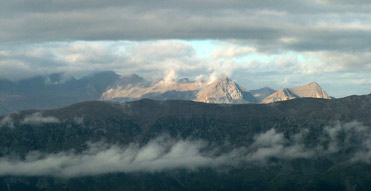
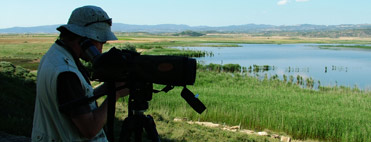
Perhaps we should provide a list of the birds you can usually see at each site. Would that make it any easier?
Posted in Photos and Places | No Comments »
Are any of you birders planning a visit to Belchite? You know, Dupont’s Lark, Black-bellied Sandgrouse and associated company?
Here’s something for you to start familiarising yourself with the birds of this unique area:
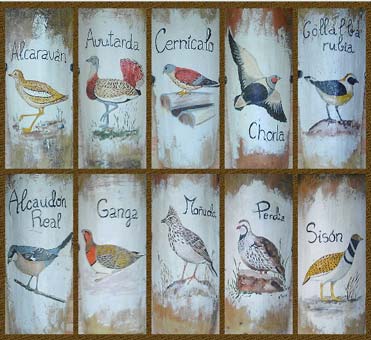
And some of their local names too!
What a lovely detail this is for guests staying at the nearby Hotel Rincón del Cierzo. BirdingInSpain.com’s recommended accommodation for the Belchite steppes itinerary. We don’t recommend any old place you know, but rather the best-placed, well-regented and reasonably-priced establishments we know about. Do you get the picture?
If not, here it is again!

Posted in Birding and wildlife trips, Photos and Places | No Comments »




























